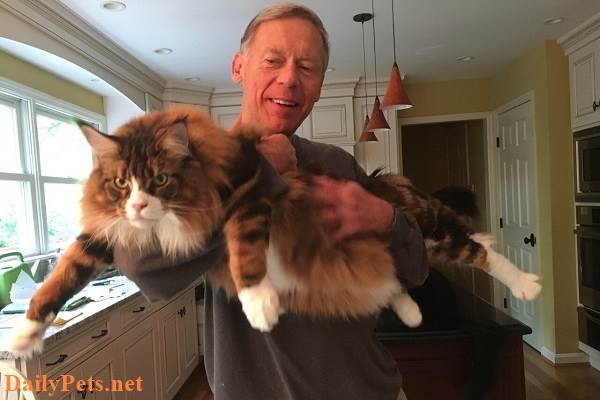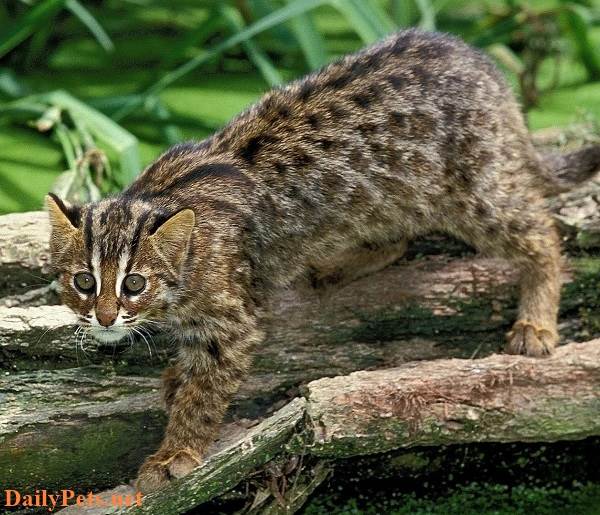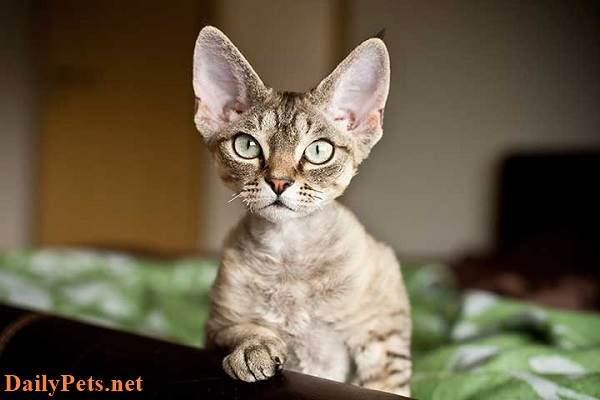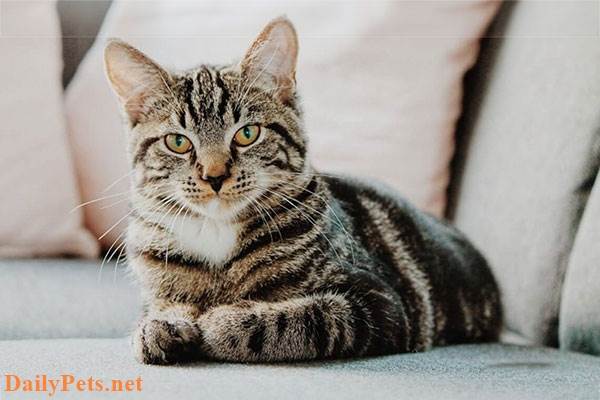Explore their unique characteristics and personalities and why they make wonderful companions for cat lovers.
Maine Coon Cat
• Length (including tail): 80 – 100 cm
• Height: 25 – 41 cm
• Weight: 6.8 – 11.3 kg
• Fur, coat color: Long, thick; diverse coat colors
• Lifespan: 10 – 12 years
• Price: $1,000 – $2,000 USD
The Maine Coon cat is considered the largest domestic cat breed in the world. They are a native breed from the state of Maine in the United States. Maine Coon cats are highly popular in the United States and currently rank second on the Cat Fancier’s Association’s list of the 41 most popular cat breeds in the world. In 2010, a Maine Coon named Stewie was recognized by the Guinness World Records as the cat with the longest length in the world: 123 cm (including the tail).

Maine Coons are intelligent cats with excellent hunting skills. They have large, robust bodies with flexible joints and sharp claws. This breed matures quite slowly, taking about 3-5 years to reach its maximum size, while other cat breeds only take about 1-2 years. Despite their large size, Maine Coons are known for their gentle nature.
Maine Coons are active cats and particularly enjoy the water. It is important to provide them with regular exercise to prevent boredom. Although they are generally docile, they can be wary of strangers. Maine Coons may be prone to certain health conditions such as hypertrophic cardiomyopathy, hip dysplasia, spinal muscular atrophy, and polycystic kidney disease.
Savannah Cat
• Length (excluding tail): 55 – 60 cm
• Height: 40 – 45 cm
• Weight: 7.7 – 11 kg
• Fur, coat color: Short, close to the body; yellow coat with black spots resembling a leopard’s coat
• Lifespan: 12 – 20 years
• Price:
o F1 generation: $17,000 – $22,000 USD
o F2 generation: $6,000 – $10,000 USD
The Savannah cat is a relatively new hybrid cat breed. It is the result of crossing the Serval and Siamese cat breeds in 1986. By 1996, the Savannah was recognized as a separate breed by the Cat Fancier’s Association (CFA) and has been increasingly popular despite its high price. Currently, Savannah cats available on the market are classified into F1, F2, and F3 generations. Among them, F1 generation cats are directly bred from Serval and Siamese cats, making them the most valuable and largest. F2 and F3 generations are offspring of F1 cats, with lower value and size compared to F1, but still considered “expensive” compared to other cat breeds. The size measurements mentioned above are for F1 Savannah cats.
Savannah cats are large but not necessarily as heavy as Maine Coons. They have slender and agile body with a very athletic appearance and a soft, close-fitting coat. Savannah cats can jump up to 2.5 meters in height without any support. They can be considered a smaller version of a leopard. In terms of temperament, Savannah cats are known as “cats with the heart of a dog.” They are loyal, intelligent, affectionate, and can be protective of their owners in a courageous manner, similar to dogs. Savannah cats are highly trainable and responsive. Therefore, it is not surprising to see them obeying commands or being walked on a leash outside.
Savannah cats are cautious around strangers and may not appear overly friendly towards them. It is important to expose them to many people from a young age to reduce this wariness. They are an active breed, so regular exercise or designing obstacles in the house for them to freely train is recommended. Savannah cats also have a strong affinity for water so you can be assured of their hygiene. Despite being a hybrid breed, Savannah cats are generally healthy and have few health issues.
Ragdoll Cat
• Length (excluding tail): 40 – 60 cm
• Height: 20 – 35 cm
• Weight: 5.4 – 9.1 kg
• Fur, coat color: Long and thick double coat; two-tone fur with a white base combined with dark or light brown or light yellow points around areas such as the back, tail, ears, and face.
• Lifespan: 15 – 20 years
• Price: $800 – $2,000 USD
The Ragdoll cat is a hybrid cat breed that appeared around 1960 in the United States. They are a crossbreed between Turkish Angora and Siamese cats. The name “Ragdoll” was given to this breed due to their tendency to go limp like a fabric doll when picked up. Ragdolls are highly popular and currently rank third out of the 41 most popular cat breeds, according to the CFA.
Ragdolls have a large size but are very gentle and easy to care for. They are not very active and prefer to stay in one place. This breed is very affectionate and will stay by your side all day, following you around the house, sitting on your lap, snuggling in bed, and even running to the door to greet you when you come home. Ragdolls are also very friendly with other pets in the family. They are well-suited as pets in households with young children because they enjoy playing with them.
Due to their long fur, Ragdolls need to be groomed regularly. This breed is suitable for apartment living as they do not require a lot of space for exercise. Overall, Ragdolls are quite healthy, but they may be prone to some genetic diseases such as hypertrophic cardiomyopathy, bladder stones, and pneumonia.
Chausie Cat
• Length (excluding tail): 60 – 70 cm
• Height: 20 – 30 cm
• Weight: 4 – 7 kg
• Fur, coat color: Short, close to the body; non-uniform fur color, a combination of gray, silver, and black
• Lifespan: 12 – 14 years
• Price: $400 – $600 USD
The Chausie cat is a hybrid cat breed between a wild jungle cat and a domestic cat, originating from Egypt. This breed was developed in the 1960s and officially recognized as a separate breed in 1995. Chausies inherit the sleek and powerful body of the wild jungle cat, along with large ears well-suited for hunting. They are agile jumpers, and their preferred prey is birds.
Chausies are very active, playful, and interactive with their owners. It should be noted that this breed is only affectionate and shows warmth towards their owners, while they can be quite indifferent and cautious around strangers. Chausies can get along with some pets, such as dogs or other cat breeds, but they may not have patience with young children and can become aggressive. This breed is not suitable for families with babies, and caution should be exercised when introducing them to unfamiliar children. Due to their wild ancestry, Chausies have a strong and independent personality, so they require experienced owners who are not too busy. You need to spend time playing and showing affection to prevent them from becoming destructive due to boredom.
Chausies are generally healthy, with almost no genetic diseases to worry about. They do not require frequent grooming due to their short coat. However, attention should be paid to their diet as they are prone to digestive issues and can be picky eaters.
Ragamuffin Cat
• Length (excluding tail): 40 – 55 cm
• Height: 20 – 35 cm
• Weight: 5 – 9 kg
• Fur, coat color: Long and thick; diverse coat colors
• Lifespan: 12 – 16 years
• Price: $800 – $1,000 USD
The Ragamuffin cat is a variant of the Ragdoll cat. It was developed around the 1970s and was officially recognized as a separate breed in 1994. However, due to its many similarities in appearance to the Ragdoll, some cat associations still do not recognize the Ragamuffin as a new breed and consider it as a branch of the Ragdoll. Ragamuffins are currently ranked 38th out of the 41 most popular cat breeds in the world.
Ragamuffins have a wide range of coat colors compared to Ragdolls, and their faces are flatter and wider. They have a fairly thick layer of fat in the lower abdomen, giving them a chubby appearance. Ragamuffins are not very active and prefer to stay in one place. This breed is very affectionate and loyal to their owners. They will be by your side all day, following you, snuggling on your lap, and even running to greet you at the door when you come home. Ragamuffins are also very friendly with other pets in the family. They are suitable as pets in families with multiple members. Ragamuffins are ideal for families with young children because they enjoy playing with them.
Due to their long and thick fur, Ragamuffins need to be groomed at least once a week. They do not require a lot of exercise and are suitable for apartment living. Ragamuffins are generally healthy, but they may be prone to certain genetic diseases such as hypertrophic cardiomyopathy and urinary stones.
Norwegian Forest Cat
• Length (excluding tail): 40 – 50 cm
• Height: 20 – 30 cm
• Weight: 5.5 – 7.5 kg
• Fur, coat color: Double-layered fur with a long and coarse water-resistant outer layer and a thick and fine insulating layer close to the skin; fur colors range from gray to brown, with black stripes on the fur
• Lifespan: 12 – 16 years
• Price: $600 – $800 USD
The Norwegian Forest Cat, also known as the Norwegian Forest or the Wegie, is a native cat breed of Norway. They have been domesticated and have become popular pets in European countries, especially Norway, Sweden, and France. The Norwegian Forest Cat was recognized as a breed in 1987 and currently ranks 11th out of the 41 most popular cat breeds in the world.
Due to their adaptation to cold climates, Norwegian Forest Cats have a double-layered coat that is thick and long. This coat contributes to their majestic appearance, resembling a small lion. They have strong and flexible bodies sharp claws, and are skilled climbers. They also have a strong hunting instinct but can adapt well to apartment living. Norwegian Forest Cats are intelligent independent, and do not demand much attention, making them suitable for busy pet owners.
Norwegian Forest Cats mature slowly, taking about 4-5 years to reach their maximum size. Due to their thick fur, they need to be groomed at least twice a week to prevent matting. This breed may be prone to certain health conditions related to the kidneys or heart.
Siberian Cat
• Length (excluding tail): 30 – 50 cm
• Height: 18 – 25 cm
• Weight: 3.6 – 7.7 kg
• Fur, coat color: Thick and long; diverse coat colors
• Lifespan: 11 – 15 years
• Price: $1,300 – $1,600 USD
The Siberian cat is also a natural cat breed, originating from the Siberian region of Russia. Siberians are considered the national treasure of Russia and are highly popular among the population. They are also prominent in Russian folklore. Many researchers believe that Siberians are the ancestors of the current long-haired domestic cat breeds. The Siberian was recognized as a breed in 1996 and currently ranks 30th out of the 41 most popular cat breeds in the world.
Siberians have a robust and flexible body, excellent hunting skills, and a high level of activity. They are energetic, cheerful, and always happy. Siberians enjoy being with their owners and are very tolerant of strangers, as well as being friendly towards children and other pets. They have a special affinity for water and can catch small fish as prey. Siberians are not suitable for households with small animals due to their strong hunting instincts. However, they get along well with children and enjoy playing with them.
Siberians are generally healthy and adaptable to various living environments. However, they shed quite a bit and require regular grooming. They also need proper care for the ears, eyes, and nose to prevent infections.
British Shorthair Cat
• Length (excluding tail): 30 – 45 cm
• Height: 18 – 25 cm
• Weight: 5.5 – 9 kg
• Fur, coat color: Short but very dense; diverse coat colors, but the most popular and preferred color is blue-gray
• Lifespan: 12 – 17 years
• Price: $800 – $1,200 USD
The British Shorthair cat is an ancient cat breed originating from England. They were highly popular in the 1800s but experienced a decline in numbers due to the two World Wars and extensive crossbreeding. Currently, British Shorthairs are regaining popularity, but purebred individuals are rare. British Shorthairs currently rank 16th out of the 41 most popular cat breeds in the world.
British Shorthairs are calm and composed cats. They are not very active and prefer quiet places. They are very attached to their owners but do not demand much attention. They enjoy quietly following their owners around and being by their side. This breed has a gentle nature and gets along well with children and other pets. British Shorthairs can entertain themselves, making them suitable for owners who cannot spend a lot of time with their pets.
British Shorthairs are not very active and can easily become overweight. It is important to pay attention to their diet to ensure they remain healthy. Their dense coat requires minimal grooming, typically only requiring brushing once a week. Additionally, British Shorthairs may be prone to certain health issues such as gum inflammation or hypertrophic cardiomyopathy.
Turkish Van Cat
• Length (excluding tail): 30 – 50 cm
• Height: 32 – 36 cm
• Weight: 4 – 8.5 kg
• Fur, coat color: Soft and silky short fur; the dominant coat color is white with characteristic black or orange spots concentrated on the tail, ears, and head.
• Lifespan: 12 – 17 years
• Price: $200 – $300 USD
The Turkish Van cat is a natural cat breed from the Van region in Turkey. It is considered a national treasure of Turkey. The Turkish Van was recognized as a breed in 1985 and currently ranks 34th out of the 41 most popular cat breeds in the world.
Due to their wild origins, Turkish Vans are independent, active, and have a strong territorial instinct. They are loyal to their families but can be cautious and not friendly towards strangers. This breed is energetic playful, and enjoys interacting with its owners. They have a strong affinity for water and can even catch small fish. It is important to be cautious with small animals, as Turkish Vans have a strong hunting instinct. They can get along well with other pets and enjoy playing with children, but caution should be exercised when introducing unfamiliar children to this breed. Turkish Vans are excellent swimmers and enjoy playing with water. Therefore, you need to pay attention to water sources in the house as they can turn on faucets and jump into bathtubs.
Turkish Vans are generally healthy, with almost no genetic diseases. They do not require frequent grooming due to their short coat. However, they are not suitable for transportation as they can become disoriented or even vomit when traveling. It is recommended to gradually acclimate them to traveling from a young age to minimize these symptoms.
Egyptian Mau Cat
• Length (excluding tail): 30 – 45 cm
• Height: 25 – 35 cm
• Weight: 3 – 6.5 kg
• Fur, coat color: Short, close to the body; the dominant coat colors are bronze, silver, or smoke gray, with characteristic spots on the fur
• Lifespan: 12 – 15 years
• Price: $500 – $800 USD
The Egyptian Mau cat is an ancient cat breed originating from Egypt. It is a crossbreed between the African wildcat and domestic Egyptian cats. This breed was recognized in 1997 and currently ranks 20th out of the 41 most popular cat breeds in the world.
Egyptian Maus have a sleek and agile body. They are skilled jumpers, climbers, and excellent hunters. They are an active, intelligent, friendly, and affectionate breed. Egyptian Maus have a special affinity for water and can even catch small fish. They are cautious around strangers and may not be very friendly towards them. However, they are friendly towards children and other pets in the family.
Egyptian Maus are generally healthy, with almost no genetic diseases. Due to their short coat, they do not require frequent grooming, and bathing is almost unnecessary. They are not picky eaters and are easy to care for, making them suitable for busy pet owners.





